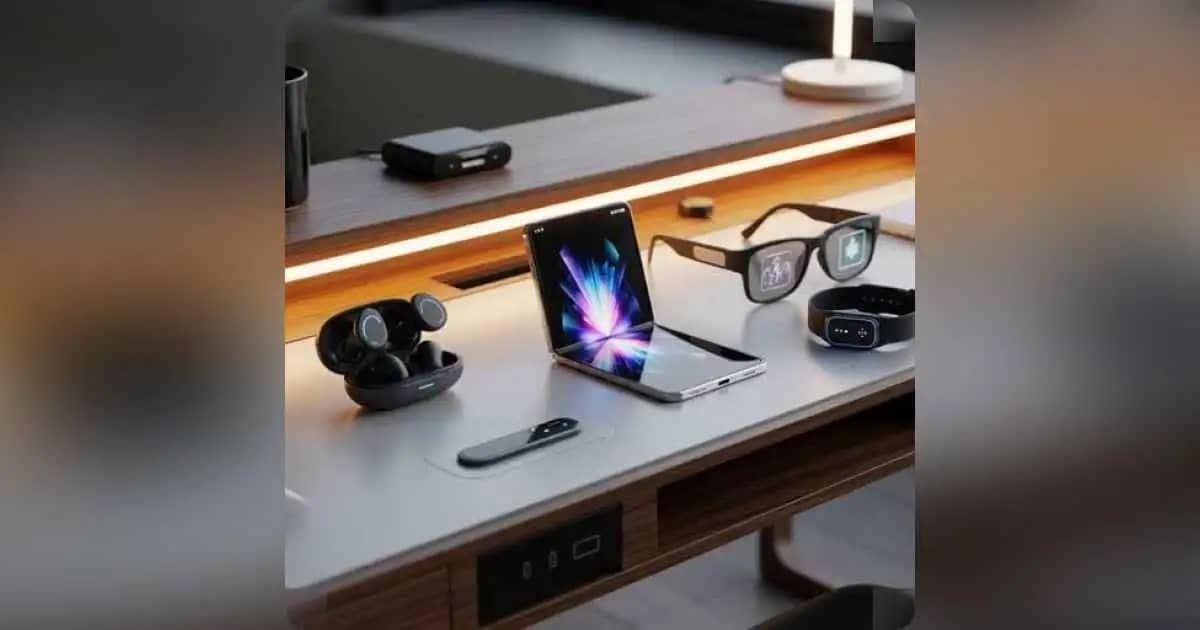
Trending Tech Gadgets Revolutionizing Daily Life
Explore the latest trending tech gadgets reshaping routines and culture
Let me ask you something.
When was the last time a piece of technology made you feel.. something?
Not just impressed or entertained, but genuinely altered your day - changed how you work, rest, relate, or even love?
Because that’s what trending Tech gadgets are doing now - quietly, sometimes dramatically, rewriting the emotional and cultural script of everyday life.
Not in five years. Not "in the future."
Right now.
In this long-form piece, I want to walk you through the pulse of what's actually happening - not from a spec sheet, but from street corners, subway rides, Zoom calls, bedrooms, and hospital beds. This is a Story not just about devices, but about the humans adapting to them, resisting them, or being reshaped by them.
What Makes a Gadget “Trending” Now?
Let’s start by redefining the term. A trending tech gadget today is not just a new device. It’s a behavioral spark - something that changes how we do something so fundamentally, we can't go back.
And this isn’t just about consumer sales.
It’s about cultural saturation.
It’s about seeing the same thing pop up in Tokyo cafés, on Nairobi buses, inside São Paulo apartments, and during therapy sessions in Berlin.
Let’s explore some of these emotionally charged, socially complex, and subtly radical innovations.
AI Earbuds: The Whispering Assistants in Our Ears
They don’t look like much - just sleek buds in your ears. But devices like the Humane Ai Pin and Meta’s AI-powered Ray-Ban glasses are no longer content just to play music.
They’re talking back.
“My earbuds helped me break a panic attack,” shared 23-year-old Sarina, a graphic designer in Mumbai. “It told me to breathe. Literally. And I listened.”
These are no longer accessories. They’re companions. Sometimes, they feel closer than our friends.
Features you may find now include:
- Real-time language translation
- Conversation summarization during meetings
- Health monitoring (like heart rate or stress patterns)
- Contextual answers whispered mid-task
If that doesn’t alter your day-to-day rhythm, what will?
According to The Story Circuit’s deeper tech profile, these gadgets are part of what analysts are calling a "golden AI interface wave." They're not taking over your screen; they're becoming your sidekick.
Reflection Prompt:
What would it feel like to have a digital voice that understands your emotional state better than your partner does?
Foldable Screens and the End of the Flat World
When foldable phones first hit the market, many of us scoffed.
Too fragile. Too gimmicky.
But what we missed was their intention - to collapse productivity and play into one flexible form.
Now in 2025, foldables like the Samsung Galaxy Z Fold 6 and OnePlus Open 2 are trending not because they’re flashy, but because they’re practical.
Here’s how real users are engaging with them:
- Students splitting screens for note-taking and lecture watching
- Traders analyzing live graphs while messaging their team
- Mothers FaceTiming their kids while reviewing grocery lists
The hinge, once seen as a flaw, is now a symbol of fluid life. One that doesn’t separate work and rest, but blends it with elegance.
“I open my phone and it feels like I’m unfolding a moment,” said Luis, a teacher in São Paulo. “It sounds silly. But it feels like opening a book again.”
Smart Rings: The Most Intimate Data Device Yet
Of all the trending tech gadgets of the year, the smart ring has perhaps the most poetic contradiction:
It is the smallest thing you wear.
And yet, it knows the most about you.
While smartwatches made health metrics cool, smart rings make them intimate.
Oura, Ultrahuman Ring Air, and the upcoming Galaxy Ring are leading the charge - offering:
- Sleep cycle tracking with micro-accuracy
- Continuous temperature and stress monitoring
- Real-time readiness scores
- Seamless syncing with meditation & productivity apps
But more interesting is the psychological shift.
People are now building their day around what their ring tells them.
“If it says I’m not recovered, I cancel meetings,” admitted Arman, a startup founder in Dubai. “It’s like a coach that doesn’t shout.”
Is that dependency?
Or is it awareness?
And if a ring guides you better than your boss or your gut - do we trust it more than ourselves?
The Emotional Labor of Owning Tech
Let’s pause here.
Because so far, it may sound like trending tech gadgets are neutral helpers.
But they're not.
Owning and using tech today is a form of emotional labor.
You’re not just pressing buttons - you're:
- Managing notifications vs attention
- Navigating updates vs identity
- Balancing convenience vs ethics
Take smart homes for example.
On paper, it’s amazing:
- Voice-activated lighting
- Thermostat auto-adjusting to your mood
- Fridge ordering groceries
But in reality?
You’re negotiating with your privacy.
“I realized my home assistant was recording private family moments,” said Jamila, a therapist in London. “That wasn’t convenience. That was intrusion.”
So, what do you choose: comfort or control?
Wearable Tech in Non-Western Cultures
Here’s where we often get it wrong.
Trending tech gadgets aren’t only a Silicon Valley story.
They’re global artifacts, adapted by local meaning.
In Kenya, farmers are using solar-powered wearables to track livestock health.
In Indonesia, smart hijabs are emerging that regulate body temperature and offer UV protection.
In India, a surge in affordable AI wearables is democratizing health data for middle-class families - from heart rate alerts to menstruation tracking apps synced with regional languages.
According to this in-depth reflection on global shifts, the success of a gadget doesn’t lie in its features.
It lies in its ability to merge with cultural need.
“My grandmother wears a smart bangle,” shared Ritu, a student from Pune. “She doesn’t call it tech. She calls it her ‘reminder angel’.”
That’s branding you can’t buy.
Trending Tech Gadgets and the Quiet Rise of Surveillance
Let’s address the darker edge.
The more intimate a gadget becomes, the more vulnerable we are.
Smart rings know your heart.
Earbuds know your stress level.
AR glasses see what you see.
This data isn’t stored in a drawer. It’s monetized, interpreted, sold.
Big Tech wants to know your mood before you do - not to comfort you, but to sell to you, nudge you, and sometimes control you.
“It’s terrifying and thrilling,” admitted Jonah, a privacy researcher. “We’ve handed over our nervous system to cloud servers.”
So where does that leave us?
Journaling Prompt:
Would you trade emotional insight for predictive manipulation? Where is your boundary?
Gadgets That Heal, Not Just Help
Let’s not forget - some tech gadgets are not about performance.
They’re about healing.
Devices like:
- Apollo Neuro (vibration therapy to reduce anxiety)
- Lumen (metabolic trackers for breath analysis)
- Muse headbands (EEG-based meditation assistants)
These aren't for productivity hacks.
They’re for recovery, reflection, and release.
And in a world where burnouts happen before breakfast, maybe the most powerful gadget is the one that tells you: “Slow down. You’re enough.”
Related article: In a World Distorted: Reflections on the Israel–Gaza War explores how emotional tech intersects with collective grief.
The Human Takeaway
Trending tech gadgets aren’t just reshaping how we live.
They’re reshaping who we become.
Not in the dramatic way sci-fi predicts. But in micro-emotions:
- The peace of closing your smart ring’s dashboard and seeing “You did well today.”
- The comfort of hearing your AI voice assistant say, “You seem tense. Should we breathe?”
- The surreal joy of a foldable screen unfolding like your next idea.
Reflection Questions for You:
- What’s the most intimate piece of technology you own? Why?
- Do your gadgets reflect who you are - or who someone else wants you to be?
- If you had to go tech-free for 48 hours, what would you miss the most?
Related Deep Reads from The Story Circuit




